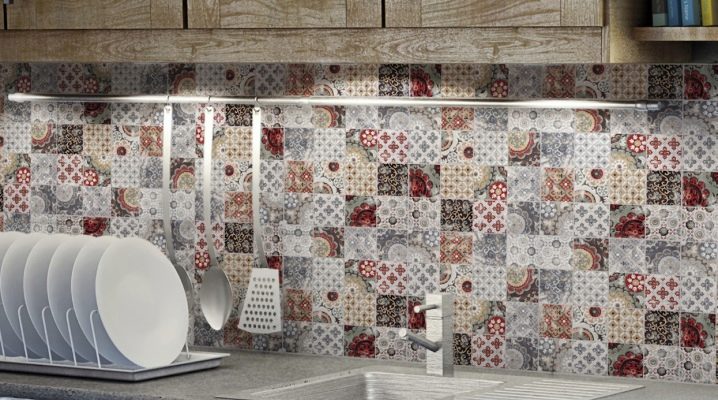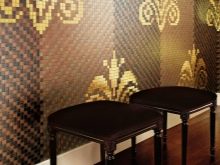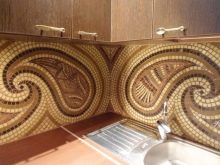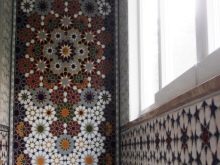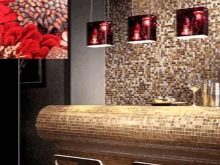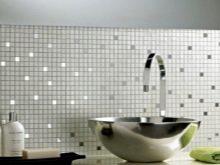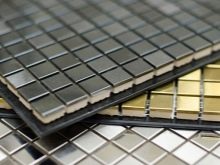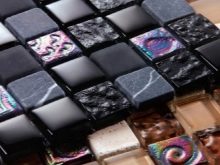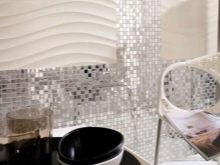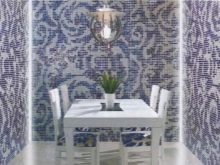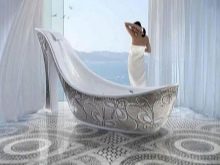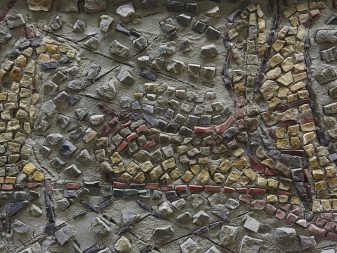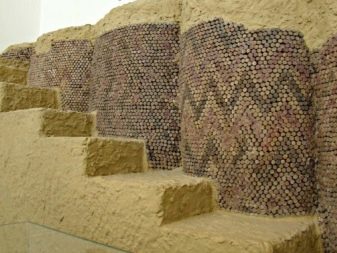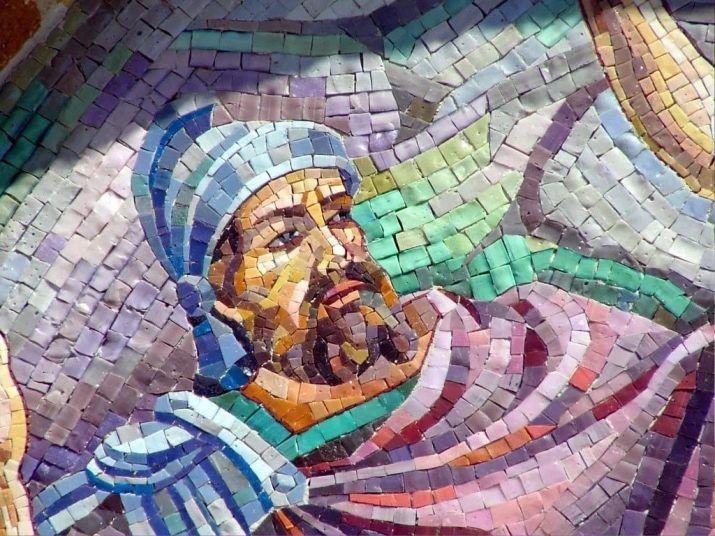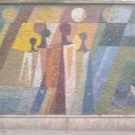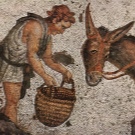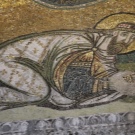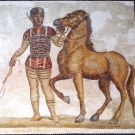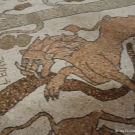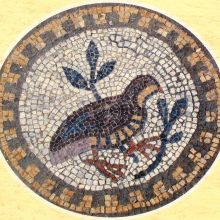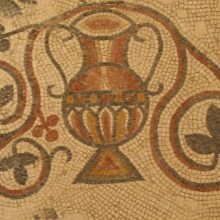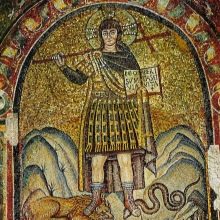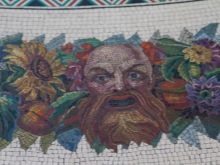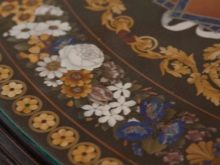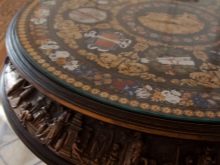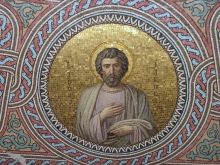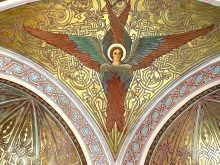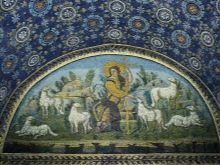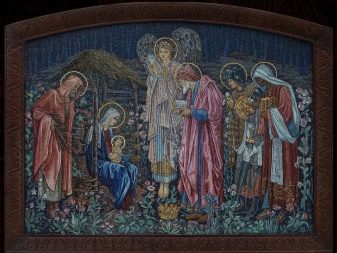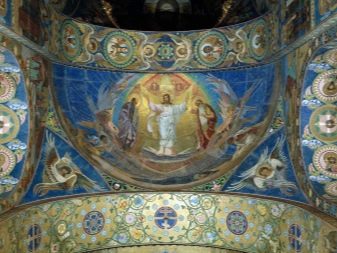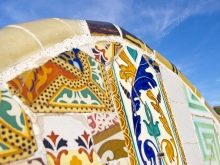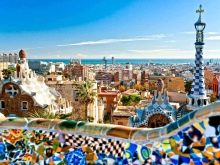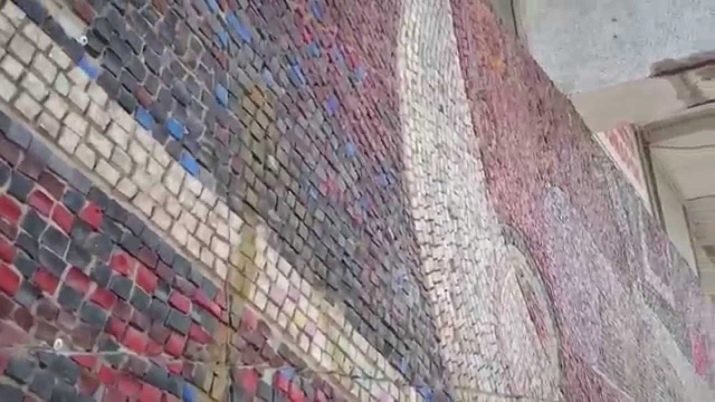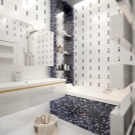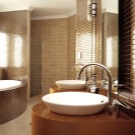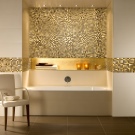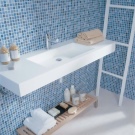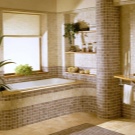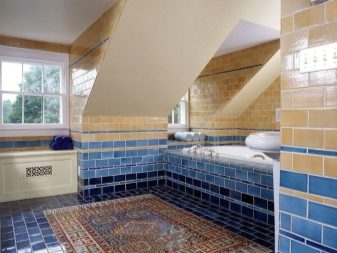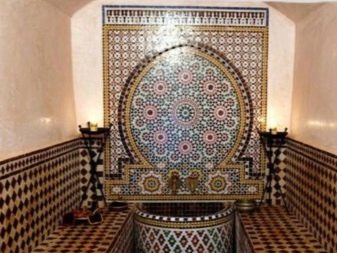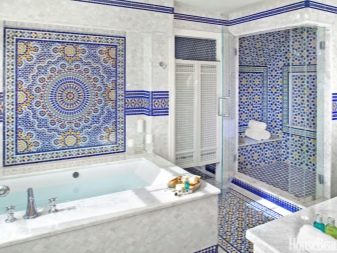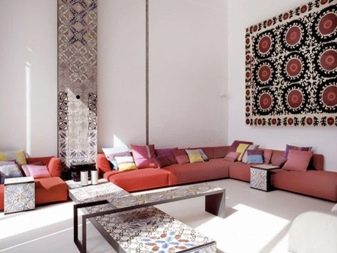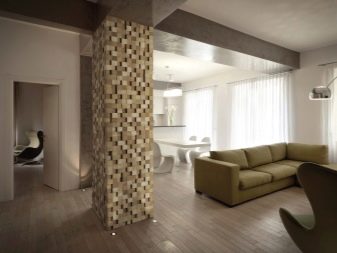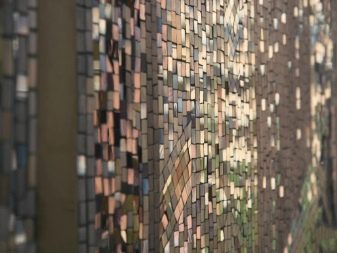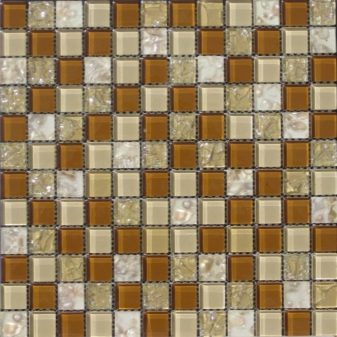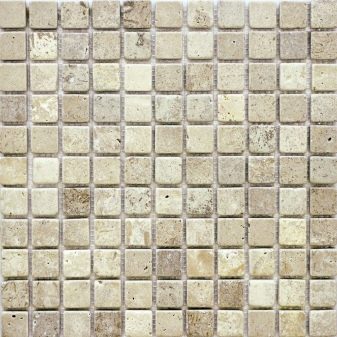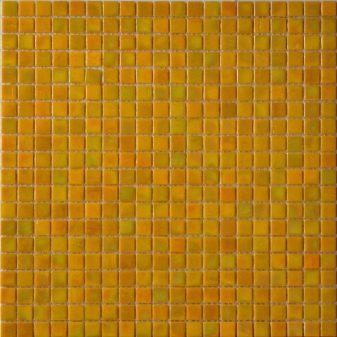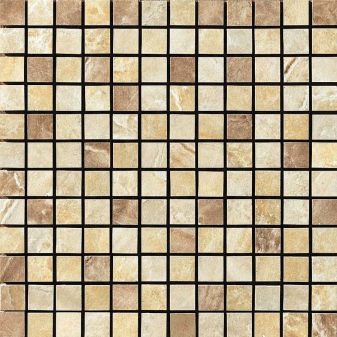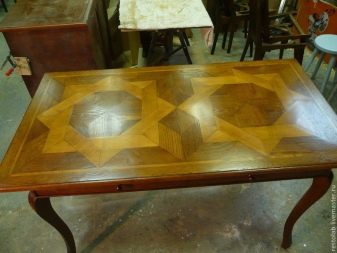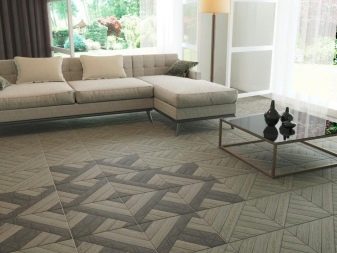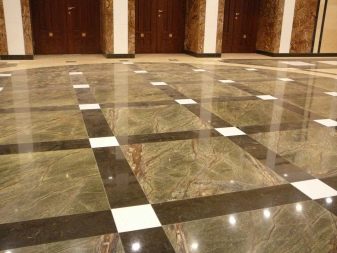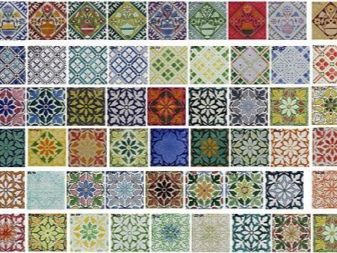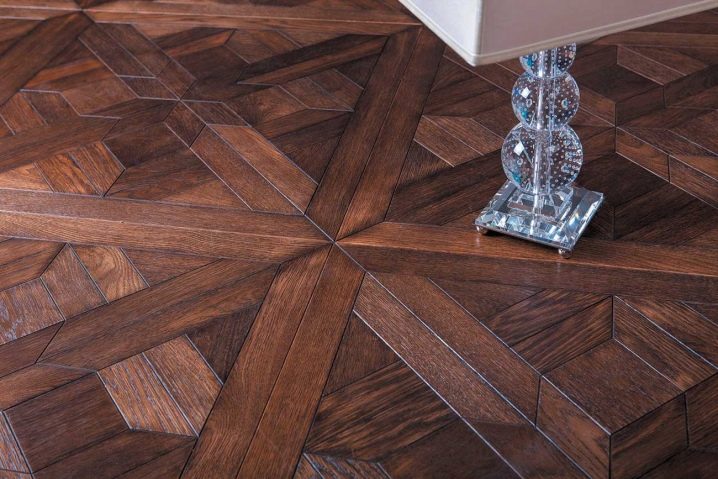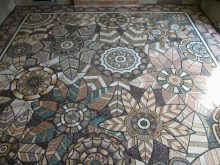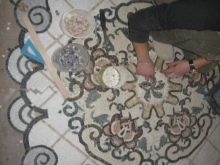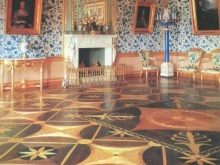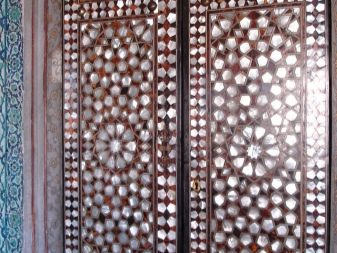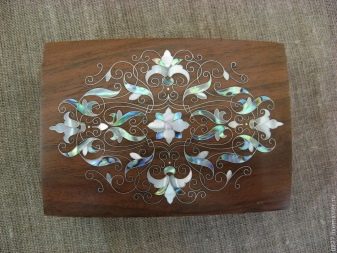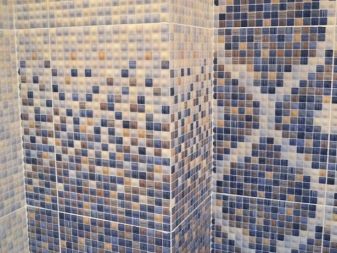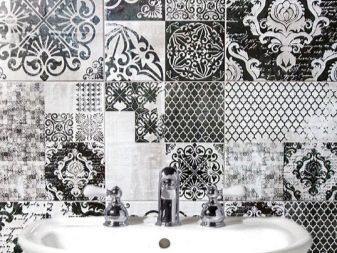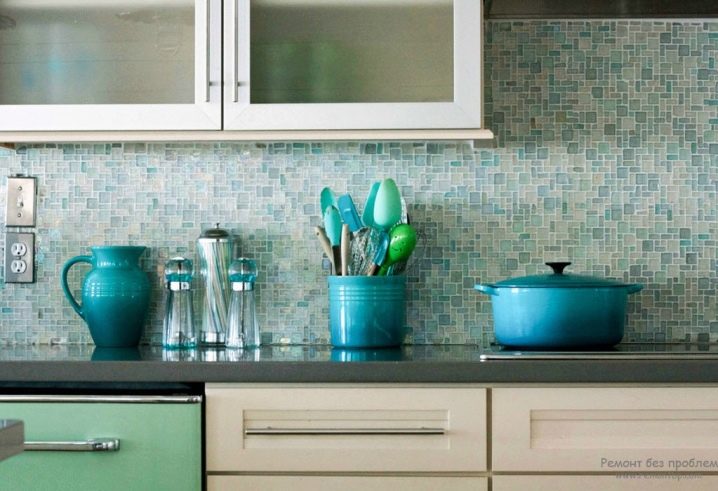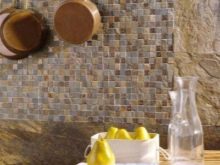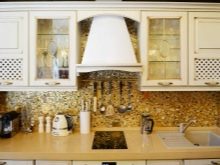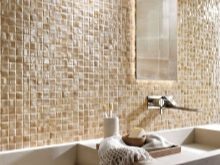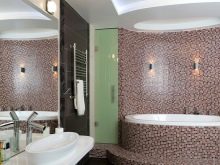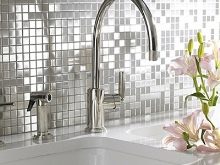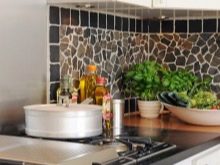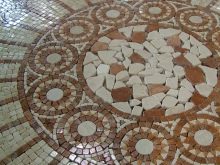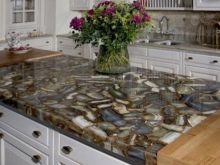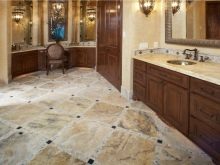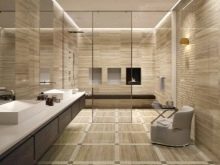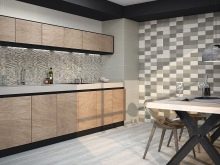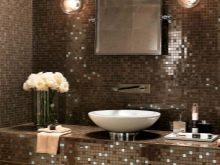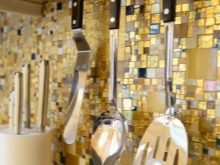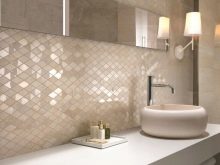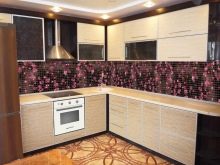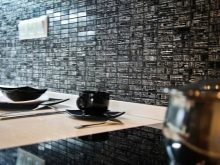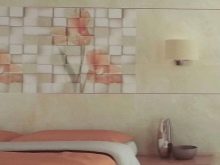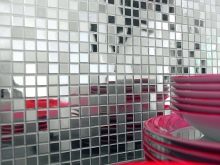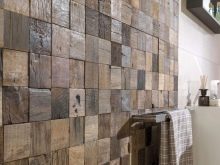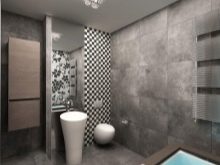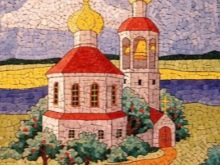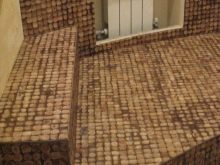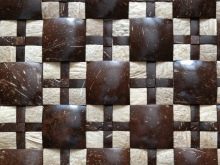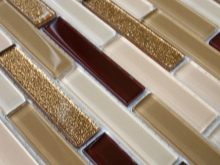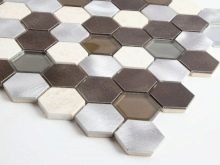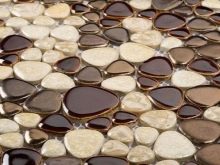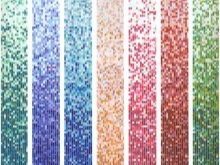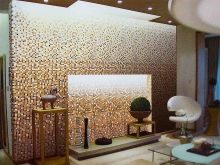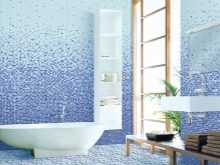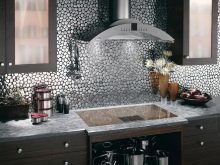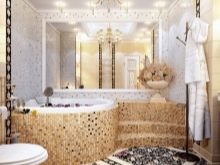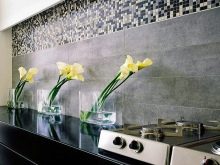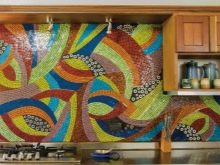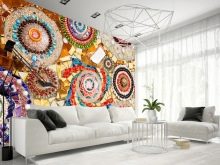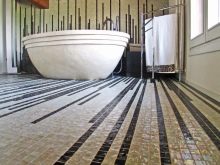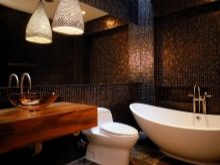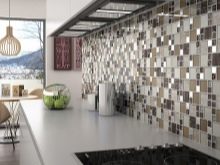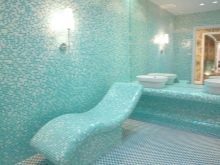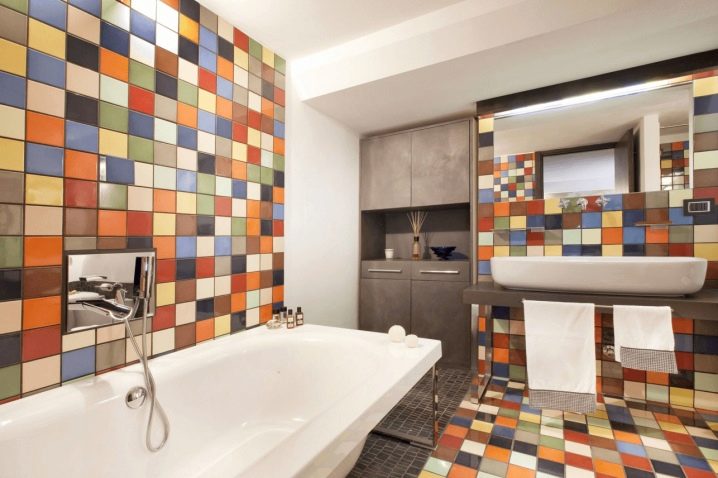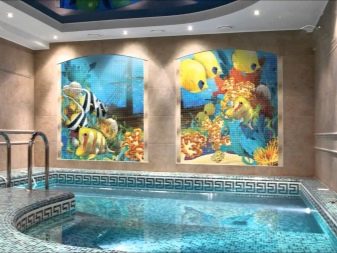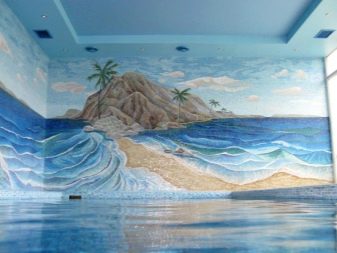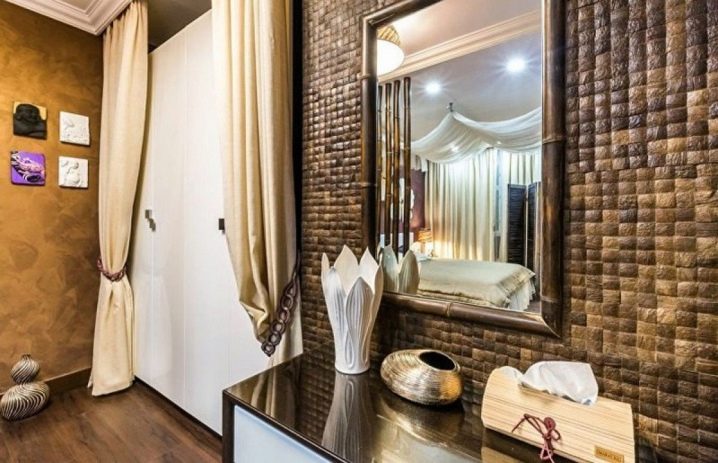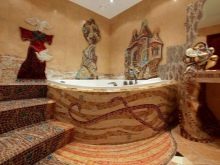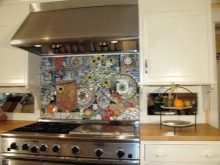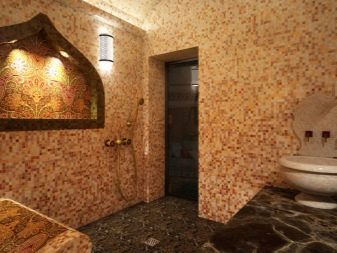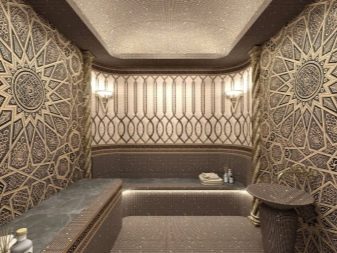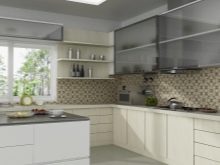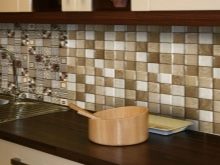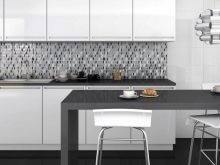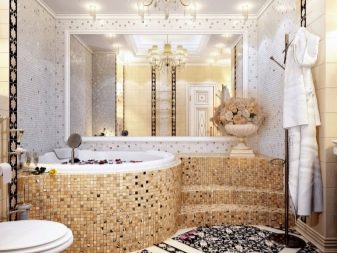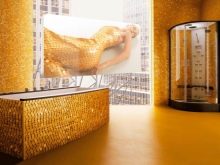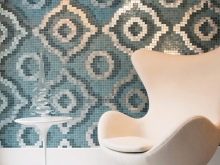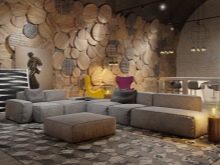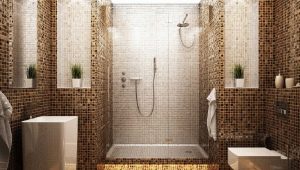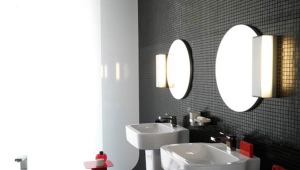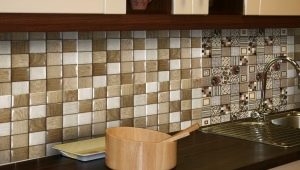Mosaic: origin and species
Mosaic - art or craft? This question can be answered in two ways. On the one hand, this is a form of art, similar to painting, where the author’s intention is embodied in the picture, but only by combining small fragments into a single whole. On the other hand, this is a craft aimed at decorating buildings and interiors, which is based on the special knowledge and skills of a wizard aimed at imparting an uniqueness to an interior.
What it is?
Mosaic is the art of creating drawings and ornaments from small multi-colored pieces, called chips (sometimes chips), from any solid material by layout on a plane. From the Italian language the word "mosaic" is translated as "folded from the pieces." The most common materials for creating mosaic canvases are natural stone, smalt (colored fragments of glass), ceramics, wood, metal.
Modern mosaic, which has undergone an impressive transformation over many millennia of development, has become, in the main, a craft that uses multicolored mosaic tiles with ready-made drawings and patterns as decoration materials. From such small tiles, either the patterns and designs planned by the manufacturer are made up, or mosaic compositions are formed by means of multi-colored tiles in accordance with the fantasies of the master or the wishes of the customer.
They began to call mosaic a finishing material, which is a collection of small rectangular tiles of various colors that make up a floor or wall pattern or pattern. For the decoration of the rooms, ceramic tiles covered with multicolored glaze were used everywhere.
But the mosaic as part of applied decorative art in the honor of many and now. Individual creations of masters of mosaic technology are valued many times more expensive than using ready-made templates. Unique ornaments and paintings are used by artists both in urban planning practice and in private customers who have sufficient funds and a sense of taste.
Such creations are created mainly from smalt (multi-colored glass pieces), stones, both artificial and natural. Moreover, the materials used in the compositions are combined with each other, creating the effect of the play of light and shadow. Individual orders for an exclusive mosaic for interior decoration of rooms using non-traditional materials, as well as precious stones and metals are not uncommon.
Modern designers practice the decoration of the premises by creating floor and wall mosaic canvases made of natural stone and mosaic tiles from expensive woods covered with fireproof and moisture-proof transparent sheath. This emphasizes the natural structure of stone and wood, sometimes separated by inserts of metal and bone. The design of any room, made in a similar way, looks low-key, but luxurious.
The mosaic display technique is actively used in the decoration of modern buildings, both outside and inside. Floor and wall mosaic tiles, covered with bright glaze, give a peculiar color and refinement to any interior.
History of origin
Mosaic originated at the dawn of human civilization as an art for creating patterns that are folded from small multicolored fragments of various materials: stone, glass, wood, shells, and other materials.
History records the beginnings of mosaic creativity in another four thousand years BC. er in Mesopotamia. In ancient times, the Sumerians created a mosaic of burned pieces of painted clay. The mosaic is also present in the tombs of the ancient Egyptian pharaohs, where multicolored glass pieces were actively used.
From VI to II century BC. er It is noted by historians as a period of pebble mosaic, when mosaic drawings were simple figures, composed of sea pebbles of black, white and reddish color. Evidence of such creativity was found during excavations in areas of Central Asia.
By the IV century BC. er the pebbled mosaic became more complex, acquiring the form of more complex patterns and designs, where lead plates were used to separate the fragments, and the number of elements began to be in the thousands.
In the III century BC. er square and rectangular tiles made of stone, glass and ceramics were used in the mosaic.This allowed to significantly diversify the composition, giving them a clear outlines and colors. Mosaic creations have become more like paintings, with greater realism. The oldest tiled mosaic was found during excavations in Sicily near the village of Morgantina.
But as a full-fledged type of applied decorative art, the mosaic was formed in ancient times, whence the name of this type of art came from. Nine patrons of the arts, who were daughters of Zeus, were considered muses in ancient Greek mythology.
The paintings created from glass and stone and reflecting scenes from the life of different times and cultures, as well as ornaments and patterns can be traced features of the development of human civilization, religious preferences of cultures and peoples.
It is possible to trace how the mastery of the luminaries of mosaic creativity was perfected: from the creation of simple stone patterns to voluminous colorful panels combining pictorial techniques and materials.
In ancient times, and then in the Roman and Byzantine empires, the use of mosaics became an integral part of urban planning practice.Mosaic tiles began to be used both to decorate the walls of houses and to decorate pavement. Mosaic began to lay out homes from the inside, covering it with walls, pools and fountains. It has become a kind of measure of the welfare of the owner.
In ancient Rome, a monochrome - black and white mosaic style originated, which became prevalent over several centuries.
In Russia, mosaic creations began to appear only at the end of the 20th century after the adoption of Christianity, which was influenced by the Byzantine Empire. Well-established production of glass smalt in Kiev in those days marked the beginning of the rise of the mosaic craft in Russia. The top of the mosaic art in Russia can be considered a panel that adorns the St. Sophia Cathedral.
The Byzantine school, where the Ravenna mosaics are most significant, was based on religious beliefs. It used popular in colored enamel and gold tiles, giving the mosaic works bright and rich colors. In this case, the gold plates were placed under different slopes, which created a magical play of light and shadow.
Eastern mosaic had its own characteristics.Based on the fact that the Islamic religion prohibits any image of body parts, including the face, in the themes of Oriental mosaics there are mainly ornaments, geometric shapes, flowers and plants, as well as all sorts of patterns.
The most difficult to perform is the technique of the Florentine school, which used natural textures of stone. The careful selection of natural stone pattern and its shades carried out by the mosaic masters and the skillful combination of this with the perfect combination into a single whole gave the Florentine mosaic works a peculiar charm, where the naturalness of materials harmoniously intertwined with the ideas of the master. The mosaic used stones such as tiger eye, malachite, agate and others. Often used for the interior decoration of the mosaic of precious and semi-precious stones and precious metals, especially for decorating furniture and fireplaces.
By the 16th century, the Florentine school of mosaic paintings was formed, which still retains its individuality. Masters of this school are in demand now.
By this time there was a clear separation between mosaic art and the work of artisans, who began to lay tiles with ready-made patterns and paintings, decorating interiors.The keepers of mosaic art as art created their own unique masterpieces, decorating temples and palaces with stained glass windows and mosaics. The mosaic was used not only for decoration, but also for decorating furniture, jewelry boxes and even clothes. The themes for the mosaic were very diverse: floral patterns, animals and birds, biblical themes, scenes of holidays, and scenes from city life.
By the end of the Renaissance, the development of mosaic art subsides, passing the baton to the panels and frescoes. But by the middle of the 19th century, the Italian master Antonio Salviati began to revive mosaic craftsmanship in a glass Venetian style. Interest in the almost forgotten craft has flared up with a new force due to the strength, practicality and durability of wall and floor coverings made of mosaic tiles.
During the reign of Catherine II, M. Lomonosov developed new technologies for the smelting of smalt and created an enterprise for its production. Many of his mosaic creations have reached our time. His composition of smalt "Poltava battle" was included in the world cultural fund. Then, after the death of Lomonosov, the mosaic craft had practically no use until the middle of the 19th century.
Interest in mosaic craftsmanship arose against the nascent style of historical architecture.At this time, mosaic workshops appear in the Vatican and London.
Tsar Nicholas I is organizing the creation of Russian mosaic workshops, inspired by Byzantine mosaics in the St. Sophia Cathedral in Kiev. For the revival of mosaics in Russia, the emperor sent artists to study at the Vatican school and began to attract foreign masters. Large mosaic workshops were organized in St. Petersburg, Paris, Vienna and Venice.
1920s Venetian mosaics, exhibited in Paris in 1925, were created in a new art deco style. Mosaic works began to appear in the modern style. In Barcelona, Antonio Gaudi together with Josep Maria Jujol make mosaics of broken glass and ceramics in Park Güell.
Mosaic as an art, as well as the craft does not stand still, constantly replenishing its arsenal with new technologies and materials. At the beginning of the XXI century, along with traditional types of mosaic, thanks to new technologies, mosaic tiles with a 3D effect of 3D images began to appear. Folded compositions of such materials, using the effect of three-dimensional space, create realistic images, especially animals, birds and landscapes.
For the promotion of mosaic artists, there are international mosaic organizations: the British Association of Contemporary Mosaics and the Society of American Mosaicists.
Species
The beauty of mosaic coatings is successfully combined with their reliability due to absolute moisture resistance and durability of the coating. Therefore, the mosaic is used as a cladding material for facade decoration of buildings, as well as for finishing rooms with high humidity.
Facade cladding with mosaic coatings makes it possible to successfully camouflage flaws and cracks.
For the facade decoration, as well as for the decoration of the walls inside the building, the methods and features that guide the classical art mosaic school are often used. It is characterized by the execution of paintings and various patterns using traditional materials: smalt, wood, bone, metal, natural stones - onyx, travertine, marble.
For flooring, the same methods often used in modern Venetian mosaic "terrazzo". It is a cement mix with stone chips and broken bottle glass, where fragments of granite and marble are added.After hardening, a very strong waterproof surface with a mosaic pattern is obtained, which is to be polished.
The style of the mosaic is divided into a variety of ornaments and patterns. If drawing dominates in European culture, then in the Eastern mosaic patterns with bright saturated colors, flowers and geometric figures prevail.
There are more and more people willing to equip bathrooms, pools and cuisines with Turkish and Moroccan mosaics.
If the Turkish mosaic tile has a bright color scheme, where bright squares and triangles are decorated with rich colors, then the Moroccan mosaic is distinguished by pastel colors and ornaments resembling Persian carpets.
Along with the time-tested mosaic types, mosaic tiles appeared, in the manufacture of which new digital technologies are used. They allow you to make mosaic tiles with the effect of 3D, which recreates the effect of volume. This property can be interpreted both in the concavity of the space, which allows both to visually expand the room, and in the convexity, as if bringing closer parts of the mosaic pattern, reviving it. 3D mosaic gives the most realistic compositions compared to traditional types of mosaics.
The mosaic is divided according to the type of materials used and the type of installation.
By type of materials used:
- glass;
- stone;
- smalt
- ceramic;
- others.
According to the method of laying mosaic can be divided into the following types:
- parquetry;
- intarsia;
- inlay;
- block mosaic.
Parquetry
In this method, mosaic fragments are used, which are geometric shapes - mainly triangles, squares and rectangles. This mosaic style is used, as a rule, to create simple ornaments and paintings. Before mounting a sketch or stencil is applied to the surface, and then along the contour the fragments are glued together with side surfaces. After this, fragmentary, taking into account color combinations, the body is filled inside the contour of the drawing, where the lateral surfaces of the fragments are coated on all sides with glue.
In this style of laying, smalt and solid wood are often used.In addition, metal inserts such as copper, brass and bronze are often practiced.
Intarsia
This type of laying mosaic canvas provides for the creation of a composition of a certain form, that is, a figured mosaic. In intarsia, mosaic tiles are fitted as accurately as possible along the side surfaces, gluing them together with each other and putting them into a floor or wall covering, in which the contour corresponding to the mosaic figure is pre-cut or hollowed to the depth of the mosaic tile.
At the same time, it is necessary to pay special attention to the alignment of the surface of the wall or sexual recess, in which the mosaic pattern is then laid. The outer surface is ground and polished. This type of laying was most popular in the Renaissance.
Inlay
This type of mosaic placement is done by cutting fragments into each other. It is considered the most time-consuming styling style and is used, as a rule, for inserting fragments of bone and metal into a wooden surface. Often used to insert into each other fragments of different tree species and stones of different texture and tonality.
After plunging into plates, they are ground on the same level with the main surface, and then the entire surface is polished.
It should look and feel to the touch as one. At the same time the surface is either polished or made matte.
Block mosaic
Block mosaic is a type of mosaic laying, in which a drawing or pattern is divided into small blocks, representing mosaic tiles consisting of separate fragments interconnected by a single color, tonal and semantic solution. This type of mosaic styling, coming from the Ancient East, continued to develop in Italy under the name of the Chertozian styling.
This type of laying is used more often to create small paintings that have small but significant elements, for example, when creating faces, bodies, animals.
Materials
Since a mosaic is a compilation of a single picture of small solid fragments, there are a great many materials for its manufacture: from pebbles used since ancient times to modern plastic, artificial acrylic-like stone and PVC panels with imitation of mosaic patterns. PVC panels are made of vinyl chloride-based plastic, which gives panels resistance to aggressive media, mechanical strength and moisture resistance.
PVC panels are also resistant to temperature extremes, which determines their durability. They are used, as a rule, for interior decoration with high humidity.
But although the plastic mosaic is the cheapest, still, in the mosaic craftsmanship, preference is given to natural components as environmentally friendly and most versatile.
The most commonly used mosaic types are the type of material used for the fragments:
- glass;
- stone;
- smalt
- ceramic;
- others.
Glass mosaic is one of the oldest species that has its own traditions. The creation of this type corresponds to different schools: Eastern, Byzantine, Venetian and Florentine.
Nowadays, Venetian glass is most often used in glass mosaics; it has such necessary qualities as durability, heat resistance, durability, and which has rich bright colors. It is used to decorate wall and floor coverings, as well as for pools and bathrooms. This type is also used to decorate furniture and fireplaces.
A cheaper alternative to Venetian glass is ordinary glass.At the heart of any glass is quartz sand. Its color depends on the dyes that are added to the molten sand, and the brilliance and modulations are achieved by adding nacre to this solution. Products from such glass can be absolutely transparent, glossy or frosted.
It must be remembered that although glass tiles are very durable, it is still not recommended to drop heavy objects on them, and they are subject to scratches.
Stone mosaic is also one of the most ancient types of applied decorative art. It uses various types of natural stone, and in modern times, and artificial imitation. For a mosaic of stone, you can use different stones: marble, granite, travertine, jasper, malachite, pebbles, tuff, etc. Sometimes even fragments of brick are used. Beautifully looks mosaic, recruited from natural stone without any treatment.
The most expensive, but also the most durable are marble, granite, onyx, jasper. Stone mosaic can be used everywhere for both exterior and interior decoration.
The stone can be both polished and made dull-rough. But we must remember that it requires special care. It should not be rubbed with abrasive materials and moistened with acidic liquids. Stone mosaic, as well as any stone products, it is desirable to rub wax-containing creams and solutions. Granite and marble, respectively, uses these natural stone rocks. They are more expensive, but also look the most elegant.
In a separate type of stone mosaics can be distinguished facing with the use of travertine. Combining the beauty of natural stone, ease of processing and affordable price, travertine is the best budget option for home decoration. This stone has a relatively porous structure, which gives ease of processing on the one hand, and on the other requires a more detailed approach to it.
When using travertine in flooring it is subjected to special impregnation to reduce porosity, increasing its durability. Travertine can have both glossy and matte surfaces. The travertine mosaic is made mainly of square stone tiles.
At the edges of the tiles with stone laying apply glue for natural stone,which is used for bonding porous surfaces and provides a reliable attachment of mosaic fragments on the surface.
The smalt mosaic is also a glass mosaic, but with a certain addition of potassium salts and sometimes manganese and other additives. Compared to ordinary glass, smalt is completely opaque. It is produced by processing ordinary glass into a powdered substrate. Then, thoroughly mixing with the dye and additives, bring to the fire to a liquid state and bake in rectangular molds (sometimes use the shape of other geometric shapes).
Each piece of smalt has a glossy or matte surface, having received its own color and tonality. Initially, blue was considered a native color for smalt, which is obtained by adding dyes based on silicic acid and cobalt to glass. The smalt was also called glass turned into stone due to the increased strength acquired after baking. Due to saturated colors, the effect of the smalt glow from the inside is created.
Ceramic mosaic is a rectangular ceramic tile, small in size.It is covered with a specific color glaze or has a gradient color fill. This mosaic is stronger than glass. It is used in facade and wall decoration both inside and outside the premises, in bathrooms and pools, in residential and office spaces. She has no equal when decorating flooring due to strength and moisture resistance.
The color range of ceramic tiles produced by the industry is very diverse - there is a color for every taste. This material is durable, moisture resistant and durable. Mosaic ceramic tiles are made in the same way as ordinary ceramic tiles: they make a solution that is poured into molds, pressed and, filled with glaze, calcined in a furnace at a high temperature. The mosaic is smaller.
Other, more rare types of mosaic coatings in use include metal, wood, coconut and with the use of bone, precious stones and metals, as well as ceramic granite mosaic.
Metal mosaic is often combined with other types. Parts with a contour often contain metal plates of silver, copper, brass and bronze, highlighting the contour of the pattern or pattern. Also, drawings with a contour are used for expressiveness of an image using color effects.
To create the most beautiful, but also the most time-consuming mosaic, they use the natural texture of stone and wood, which, in combination with other materials, can embody the most daring design ideas into a mosaic panel.
The rarely used materials include eggshell, which is used to impart aging in the form of cracks to a stone wall and to imitate flowering, while covering the pieces of the shell with multi-colored enamel.
The mosaic laid out from a shell of a coconut or a pine nut richly looks. Nutshell has a very high strength, moisture resistance and resistance to temperature changes. Facing tiles on the basis of this material are made by laser cutting into even squares. These squares are connected using natural resins.
Forms and sizes
The shapes and sizes of mosaic chips are very diverse. The length of the side can vary from 1 to 10 cm: up to 3 cm - small, and over - a large mosaic. In one mosaic composition, fragments of various shapes and sizes can be used. The canvas itself can also have different outlines.
Mosaic glass is produced industrially in the form of rectangular chips measuring 20 by 20 mm and can be either in a set of plain or multi-colored elements.
Rectangular, especially square shape is used more often than others. Often used hexagonal shape, resembling a honeycomb. Less commonly used are building fragments of the type of octagons, and quite rarely a round component.
For unconventional authoring works, the masters from the ready-made fragments make the necessary figures to avoid excessive emptiness and gaps.
Mosaicists often use broken bottle glass and fragments of stones of different configurations for individual creativity. The process is very laborious, but giving the opportunity for self-expression, avoiding the standard clichés.
Mosaic tiles are produced on the consumer market in various forms and sets of various forms, connected in a single theme. Design ideas are put on the flow everywhere. One of these ideas embodied in life, is stretching. Mosaic stretching aims to create an image volume by smoothly moving from a dark color to a light one.
At the same time, dark colors stretch, turning into a gradient, which creates the effect of wave overflow of colors, tones and semitones. In this method, with a professional approach, you can embody design ideas using color effects and properties of various colors.
In this case, the gradient can be used from the center, creating the effect of convexity or concavity of the pattern, diagonally, horizontally or vertically.
Colors
Composing mosaic canvases even from standard materials purchased in a store is a creative process that requires the master, in addition to the mosaic-laying skills, to have a certain talent for color perception.
Mosaic tiles, the so-called chips (chips) - small elements that make up a mosaic pattern, have a variety of colors and shapes. Currently, masters are available as dyes, and ready-made chips of various colors and shades.
When making mosaic it is necessary to be very attentive to the creation of color schemes, using color design solutions based on established color separation laws. When choosing colors and shades, it is necessary to take into account the location of the panel, using the perception of certain colors by the human psyche.
Each color in combination with certain shades should excite a certain mood. Bath or pool should not resemble tombstones, even if decorated with granite or marble mosaic. And in the interior of the bedroom should not dominate the bright flashy colors, relevant to the facade and external attributes of the building, fountains and pools.
Therefore, for the most effective work on the creation of mosaic creations, a designer should be attracted, subtly sensing colors and their shades, knowing the patterns of well-established color solutions, using the properties of colors in various combinations, and also able to realize their unique color fantasies. He should be able to play on shades, creating gradient soft color transitions, and use the contrasts to the full.
The ability to subtly deliver a play of light and shade according to the mood of a certain room is considered the highest aerobatics of design art.
The most commonly used color properties in design are spatial, temperature (weather) and emotional associations:
- Spatial - features of certain colors to create the illusion of increasing or decreasing objects, as well as create the impression of distance or approach, increase or decrease the space. The scalability of colors is most noticeable with the contrast of light and dark tones (especially black and white) - light fragments on a dark background visually increase, and dark fragments on a light one - on the contrary.
- Temperature - the property of color combinations and shades to create associations with heat and cold.
- Emotional - the ability of certain colors to create a certain mental mood.
In addition, when choosing colors for certain premises, it is necessary to take into account the lighting of these premises during the day and at night. It must be remembered that the same color with natural and artificial light can visualize different properties. The mosaic pattern in bright colors, superimposed on a corner or ledge, visually smoothes irregularities. Because of this, any room seems more spacious.
Incorrect selection of colors and color solutions (gradient, contrast, etc.) to a certain intensity of illumination can spoil the impression of even a very high-quality mosaic creation,creating the negative effects of the broken links between the individual elements of the composition. Colors should be perceived both close and at the same distance.
Variations of colors and color shades should take into account the different optical laws of physics. Our color perception is influenced by the law of chromatic contrast, based on the dispersive properties of light waves. Due to chromatic contrast, you can achieve a visual enhancement or reduction of color contrasts and brightness of colors.
Vivid examples of special color solutions are gray tones in various variations: on an orange background they create the effect of blue and blue inks, on lilac - yellow and its shades, on green - pink. Wood mosaic of red and yellowish-brown shades on a red background creates shades of gray, and on a green background creates a red saturated color. On a pink background, green looks the most vivid.
A multicolored composition against the background of slightly saturated shades acquires the greatest brightness, which colors the entire background with the brightest color of the pattern itself. In this embodiment, the mosaic in a combination of a drawing or a composition from a drawing and an ornament in bright glossy designs with a background in pastel colors looks good.
A good example is the combination of the surface of a pattern with a matte beige or turquoise background, which is glossy in rich marine tonalities. In this combination, often make out the bathrooms and kitchens.
The mosaic of wooden material is in good harmony with various metal inserts, both in the form of separator plates, and as separate composite fragments. In this case, as a rule, silver metal fragments are used against the background of light wood. Copper, brass and bronze are used on the background of dark wood textures. The stone mosaic is also formed according to the same color principle.
Recently, the so-called coconut mosaic has become very interesting. The interest of the masters has awakened to this exotic material due to its durability, beauty and durability. Rectangular coconut chips are made from coconut shards. The cut out fragments are interconnected by natural resins, which gives the product a complete ecological purity.
Such products can be both homogeneous, differing only in the tone of tiles, and have metal inserts in them: silver, copper and brass.Such an entourage adds sophistication to the interior in general and makes the design of furniture and fireplaces more elegant. In addition, one of the advantages of using coconut mosaic, compared with wood and stone, is a high resistance to damage and scratches.
Interior Design Examples
Interior design is the final and most important stage in the creation of a home. What space we create around us, and we will live. The objects surrounding us and the decoration of the rooms are intended to create a comfort zone where a person should feel most protected in warmth and comfort after a busy day of work. The premises of our homes should have the greatest functionality and bring aesthetic pleasure from being in them.
Creating an interior must begin with a sketch, and then draw up a phased plan for the implementation of works. Any interior decoration, furniture placement and lighting must be clearly determined at this stage.
The mosaic technique of the execution of drawings and patterns is not only used as decoration, but also used as a protective coating. Mosaic, of course, if done by a real master of quality materials and taste,in itself very beautiful, and also possesses high wear resistance and moisture impermeability, and therefore is durable.
These qualities of mosaic coating have become in demand, first of all, in rooms with high humidity, such as bathrooms, baths, saunas and swimming pools. Some names of the ceramic coating that is being marketed to the general consumer are appropriate for the type of use of the name, for example, the Hamam mosaic. Hamam is the name of the Turkish baths, in which a certain type of mosaic art has historically formed - color and purity, diluted with oriental flavor, have become legends.
Prototypes of well-known hamams in private domains are becoming the norm in the global practice of building private baths. Facing the room of the bath is the final touch to the creation of the structure, but it can be considered the most important, since each bath is a small work of art.
Its decoration should be individual, and especially for a Turkish bath - it should convey the full color of the oriental flavor, creating the necessary mood for the visitor.
The interior decor of bathrooms and kitchen rooms is carried out in combination with mosaic canvases of bright saturated colors or, on the contrary, in soft pastel colors. The decoration should depend on the overall style of the room and match the style of the furniture. Wall and floor coverings are, as a rule, performed in the same style.
Making mosaic kitchen, special attention should be paid to the kitchen apron - this is the open part of the wall between the table top and wall cabinets, so the evaporation products during cooking settle on this surface. To conceal traces of fat and other sediments, ceramic mosaic tiles with color stretching are used, with gradients of grayish-brown color transitions.
The bathroom is characterized by facing mosaic tiles with the creation of multi-colored patterns and patterns that enhance mood. You can create compositions on various topics, or you can simply vary the colors. With limited funds, as mosaic tiles are more expensive than ordinary tiles, you can decorate with mosaics only one wall in the bathroom, which is the so-called room accent - this is the wall that is more often seen when you are in the room.The remaining walls can be revetted with ordinary ceramic tiles, but at the same time the basic color tonic should be in harmony with the mosaic dominant color.
Ordinary glass and fragments of smalt are used to decorate rooms with high humidity, facades of buildings, cafes and restaurants. Stone mosaics decorate the interiors of residential premises and offices. Ceramic is used for the same purposes as ceramic tiles: to cover the floor and walls, in bathrooms and on the facades of buildings.
Mosaic works are most comfortable when fragments are placed in advance on original matrices having a size of 300 by 300 mm. They are called tesserami. They have a paper or polyurethane base, which is more convenient than gluing them directly to the wall. In this case, bonding occurs most accurately.
The decor of any interior, decorated with mosaics, looks most elegant compared to simple ceramic tiles and wall panels. The mosaic is used both by itself in the form of wall and floor coverings, and in combination with other finishing materials, harmoniously combined with them.Its use is not only a kind of measure of the welfare and success of the owner, but also shows his aesthetic preferences, which are laid out for many years on a general review.
Therefore, the embodiment of fantasy, laid out with tiles, must be approached responsibly, attracting professionals.
Characteristics of the types of mosaic and tips on its choice, see the following video.
